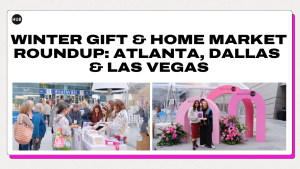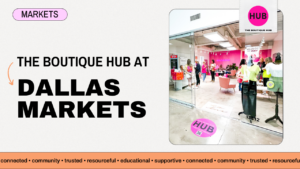APPLE PODCAST | SPOTIFY | YOUTUBE
Starting a business is an exciting venture, but it’s also a journey filled with critical decisions that shape the future of your brand. One of the most important steps you can take early on is trademarking your business. This legal safeguard not only protects your business name, logo, or slogan but also ensures you have exclusive rights to your brand identity. Here’s why trademarking is essential and how to get started.

Trademarking Your Business
Why Trademarking Matters
Trademarking provides legal protection, preventing others from using your business name or brand elements. Without it, competitors—or even unintentional copycats—could create confusion among your customers. Imagine someone down the street using your exact business name on social media, potentially misleading customers or diluting your brand. A trademark ensures you have the legal grounds to prevent this from happening.
Steps to Trademark Your Business
If you’re ready to take this step, follow these simple guidelines to ensure your trademark process is smooth and effective.
1. Conduct a Thorough Name Search
Before investing in a trademark, research your business name extensively:
- Google Search: Check if anyone else is using a similar name. If your name isn’t unique, it might not be worth trademarking.
- Social Media Search: Ensure no one has already claimed your desired handles or created confusion online.
- Domain Search: Secure all related domain names, even if you don’t plan to use them immediately. For example, if you’re starting “Flossy Peach,” buy “flossypeach.com” and related variations.
💡 Pro Tip: Don’t repeat the mistake of only purchasing one domain name. Owning multiple variations of your domain can save you from future headaches and steep costs if you need to buy them later.
2. Search Existing Trademarks
Visit the United States Patent and Trademark Office (USPTO.gov) to search for registered trademarks. This step helps you identify potential conflicts before filing your application. If someone already owns a trademark for a name or slogan similar to yours, it could complicate the process—or worse, prevent you from using your chosen name.
3. Understand Trademark Classifications
When filing for a trademark, you’ll need to register under specific classifications. Each classification represents a category of goods or services, such as apparel, digital services, or nonprofit organizations. You can file for multiple classes, but keep in mind that each comes with additional costs.
For example:
- Goods & Services: T-shirts with your logo.
- Digital Services: Online platforms or software.
- Events: Trade shows or summits.
Be mindful of potential objections from other businesses. For instance, if your brand name resembles a well-known trademark, their legal team may contact you to negotiate terms, as was the case when The Boutique Hub trademarked “Boutique Boss” and encountered concerns from Hugo Boss.
4. File Your Trademark
Once your research is complete, it’s time to file your trademark. Here’s how:
- DIY Route: Platforms like LegalZoom can simplify the process. Expect to spend around $500-$700, depending on the number of classifications you select.
- Hire an Attorney: For added peace of mind, work with an attorney who specializes in trademarks. Members of The Boutique Hub can access vetted professionals, like Angie Turner, through the service provider directory.
💡 Reminder: Trademarks need to be renewed every five years, so mark your calendar to avoid lapses in protection.
Why Trademarking Is Worth It
Trademarking might feel like a daunting expense, especially in the early stages of your business. However, the cost of securing your name is far less than the expense and effort required to rebrand if someone else claims it first. Rebranding can lead to customer confusion, lost revenue, and additional marketing costs to establish a new identity.
By investing in a trademark, you’re not only protecting your business but also setting yourself up for long-term success. It’s a small step today that safeguards your brand’s future.
Let’s Connect #AskAshley
- Have a question or guest recommendation? Let us know your feedback directly here!
- Do you love the Boutique Chat Podcast?! Subscribe to our podcast and after that, leave us a review on iTunes Apple Podcasts here!
Must Have Resources
- The Boutique Hub: Website | Facebook | Instagram | Pinterest | TikTok | YouTube
- Boutique Summit 2024
- Small Business Marketing Handbook
- Small Business Hiring Handbook
- Brand Owner Basics Masterclass
- Tradeshow Marketing Handbook
- 2024 Trade Show Calendar
- Boutique Hub Black
- Hubventory.com
Recent Posts:
- Winter Gift & Home Market Roundup: Atlanta, Dallas & Las Vegas
 A Boutique Hub Guide for Gift, Home & Lifestyle Retailers Winter markets are where the buying year truly begins and 2026 is no exception! From gifts and décor to lifestyle and curated home goods, Atlanta, Dallas, and Las Vegas offer three of the most essential winter buying experiences for retailers. Whether you’re a seasoned gift… Read more: Winter Gift & Home Market Roundup: Atlanta, Dallas & Las Vegas
A Boutique Hub Guide for Gift, Home & Lifestyle Retailers Winter markets are where the buying year truly begins and 2026 is no exception! From gifts and décor to lifestyle and curated home goods, Atlanta, Dallas, and Las Vegas offer three of the most essential winter buying experiences for retailers. Whether you’re a seasoned gift… Read more: Winter Gift & Home Market Roundup: Atlanta, Dallas & Las Vegas - The Boutique Hub at the Dallas January Total Home & Gift Show + Apparel, WESA + AETA
 The time has come for Dallas Market and the Hub team couldn’t be more excited! We know how busy market days can be so we wanted to make sure you guys are filled in on our schedule so you can come and stop by!
The time has come for Dallas Market and the Hub team couldn’t be more excited! We know how busy market days can be so we wanted to make sure you guys are filled in on our schedule so you can come and stop by! - Your Boutique Has a Voice. It’s Time Your Marketing Did Too.
 “Your boutique already has a voice customers trust. SellSavvy helps you make sure your marketing finally sounds like it.” Your audience doesn’t need more noise — they want more you. They want connection, personality, and that one-on-one feel that made them fall in love with your brand in the first place. SellSavvy helps you deliver that at scale, turning every customer interaction into an opportunity to sell smarter — not louder.
“Your boutique already has a voice customers trust. SellSavvy helps you make sure your marketing finally sounds like it.” Your audience doesn’t need more noise — they want more you. They want connection, personality, and that one-on-one feel that made them fall in love with your brand in the first place. SellSavvy helps you deliver that at scale, turning every customer interaction into an opportunity to sell smarter — not louder.




